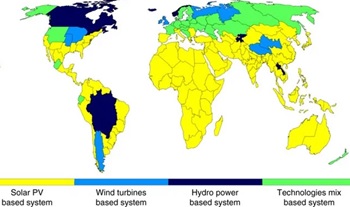Energy systems have important and often hamful environmental impacts. Historical and current energy systems producing carbon dioxide are dominated by fossil fuels (coal, oil and gas). They produce as well other greenhouse gases affecting climate change and accelerating exponentially global warming. Up to 2018, Solar, Wind, Hydropower, Nuclear and other minor renewable energy sources barely managed to satisfy 4% of global energy consumption, while production using polluting resources grew close to 50% during the first 18 years of this century. The visible reduction in air pollution due to the paralysis caused by the pandemic, demonstrates the need for a radical transformation of energy sources.
The world’s energy system must be transformed completely
It has been changed before, but never as fast or fully as must happen now. 
For more than 100,000 years humans derived all their energy from what they hunted, gathered and grazed on or grew for themselves. Their own energy for moving things came from what they ate. Energy for light and heat came from burning the rest. In recent millennia they added energy from the flow of water and, later, air to the repertoire.
But, important as water- and windmills were, they did little to change the overall energy picture. Global energy use broadly tracked the size of a population fed by farms and warmed by wood.
The combination of fossil fuels and machinery changed everything. According to calculations by Vaclav Smil, a scholar of energy systems at the University of Manitoba, between 1850 and 2000 the human world’s energy use increased by a factor of 15 or so.
(...)
[ Full text ]
Comments powered by CComment